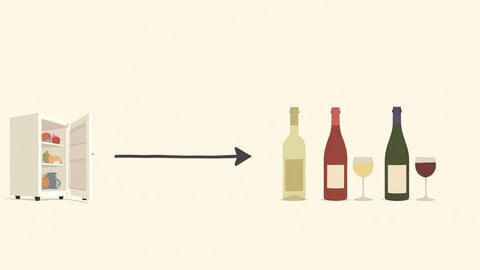Introduction: A Sustainable Approach to McLaren Vale Shiraz & Grenache
McLaren Vale is a treasure trove for lovers of Shiraz and Grenache. Beyond the familiar names and iconic styles lies a quieter layer of producers prioritising sustainability, old vines and restrained winemaking. These bottles often provide exceptional value for cellaring and spectacular rewards when shared over long meals and milestone gatherings. This guide explores terroir, sustainable practices, label cues, tasting archetypes, cellaring strategies and practical pairing ideas to help collectors and hosts build a considered, climate‑conscious McLaren Vale cellar.
Region Snapshot: Climate, Soils and Old Vine Advantage
McLaren Vale sits on the Fleurieu Peninsula with a warm Mediterranean climate moderated by coastal breezes. Soils range from deep sands to loams, ironstone and limestone pockets. This diversity produces a range of Shiraz expressions from plush and fruit‑forward through to savoury, peppery styles; Grenache shows vibrant red fruit, spice and silkiness, particularly from older, low‑yielding vines.
- Coastal influence: Diurnal temperature variation helps retain acidity and aromatic lift, important for long‑lived wines.
- Soil variety: Sandy sites favour lighter, perfumed Grenache; loams and clay‑rich pockets support concentrated Shiraz with structural tannins.
- Old vines: Deep roots and lower yields often translate into balanced phenolic ripeness and complexity ideal for ageing.
Sustainability That Translates to Cellaring Potential
Sustainable viticulture is more than a marketing claim. Healthy soils, careful water use and biodiversity increase vine resilience and often improve grape balance, acidity and tannin structure. These elements matter for wines built to age.
- Soil health and carbon farming: Practices such as cover cropping, composting and reduced tillage increase organic matter and water retention, producing more balanced grapes.
- Water stewardship: Deficit and targeted irrigation strategies concentrate flavour without pushing excessive vigour, supporting wines with finesse rather than sheer power.
- Integrated pest management: Biological controls and minimal sprays protect vine health while preserving natural microbiomes that contribute to complex fermentation dynamics.
- Minimal intervention winemaking: Whole‑bunch ferments, native yeasts and restrained new oak emphasise terroir and create wines with structural clarity suited to medium and long term ageing.
- Packaging and carbon reduction: Lighter glass, closures chosen for longevity and recycled materials reduce environmental impact while maintaining cellar stability.
Recognising Sustainable Cellaring Candidates on the Label
Labels can be a quick filter when selecting bottles for ageing. Look for clear, transparent statements rather than vague claims.
- Certifications: Australian Certified Organic (ACO), Biodynamic Australia or regional sustainable winegrowing programs indicate verifiable practices.
- Old‑vine or single‑site designations: Signals low yields and site specificity, often correlated with complexity and ageworthiness.
- Vinification notes: Details such as percentage whole‑bunch, time on skins, type of oak and maturation time give clues to structure and cellaring potential.
- Alcohol and acid balance: Wines in the 13–14.5% ABV range with moderate natural acidity tend to age more gracefully than very high‑alcohol bottlings.
- Closure type: Cork remains a good choice for long cellaring, while screwcaps offer consistency and are fine for medium‑term ageing depending on bottle construction.
Shiraz Profiles Worth Cellaring
Shiraz from McLaren Vale covers a broad spectrum. For cellaring and sharing, prioritise structure, balance and provenance.
-
Structured, oak‑integrated Shiraz
- Characteristics: Dark fruit, black pepper, smoked meat, cedar, graphite; firm but ripe tannins and steady acidity.
- Ageing: 10–20 years for well‑made examples; tertiary development brings leather, earthy nuances and spice.
- Best for: Formal dinners, lamb roasts, aged cheeses and celebration bottles.
-
Finer‑boned, savoury Shiraz
- Characteristics: Sienna earth, ironstone minerality, black cherry and cracked pepper with restrained oak.
- Ageing: 8–15 years; these wines reward patience with increasing complexity and perfume.
- Best for: Slow braises, venison or mushroom dishes that highlight savoury notes.
-
Rich, concentrated Shiraz
- Characteristics: Ripe blackberry, chocolate, vanilla and fuller body; higher alcohol styles need careful cellar assessment.
- Ageing: 5–12 years depending on balance; very concentrated wines can age longer but may require decanting.
- Best for: Grilled or barbecued red meats and rich stews matched to the wine's power.
Grenache Styles That Age Gracefully
Grenache in McLaren Vale is often lighter in colour but can show tremendous depth when coming from old vines and low yields. Look for wines with natural acidity and delicate tannins.
-
Old‑vine Grenache
- Characteristics: Red cherry, raspberry, dried herb, orange peel and gentle spice with a silky texture.
- Ageing: 7–15+ years for top examples; develops savoury, dried fruit and floral complexity.
- Best for: Roast pork, Mediterranean dishes, saffron rice and shared platters.
-
Rosé and lighter Grenache styles
- Characteristics: Fresh strawberries, citrus lift and textural finesse; best consumed earlier but some can age 3–6 years.
- Ageing: Short to medium term; rosé is often for immediate sharing rather than long cellar storage.
GSM and Shiraz‑dominant Blends for Versatility
Blends combining Shiraz, Grenache and Mourvèdre often marry structure, fruit and savoury elements, making them excellent candidates for cellaring and group drinking. Seek blends where each variety plays a clear role rather than simply amplifying alcohol and oak.
- Advantages: Blends can offer immediate appeal and a defined ageing trajectory, often softening earlier than single‑variety high‑tannin Shiraz.
- Ageing: 7–20 years depending on balance and oak integration.
- Best for: Shared meals with mixed plates, barbecue gatherings and multi‑course menus.
Detailed Cellaring Guide: From Purchase to Pour
-
Temperature control
- Keep cellar temperature steady at 12–14°C. Small fluctuations are acceptable, but avoid heat spikes above 20°C which accelerate ageing.
-
Humidity and closures
- Relative humidity of 60–70% helps preserve cork integrity. Screwcap bottles are less sensitive to humidity but still benefit from stable conditions.
-
Light and vibration
- Store bottles in a dark, vibration‑free environment to protect volatile aromatics and prevent premature chemical reactions.
-
Positioning and rotation
- Store cork‑finished bottles on their side to keep the cork moist. Rotate stock so vintage and drinking windows are tracked and older bottles are enjoyed at peak.
-
Inventory management
- Record bottle details — vintage, producer, date bought, suggested peak drinking window and tasting notes. This simple log prevents missed windows and duplicate purchases.
-
When to decant
- Young, tannic Shiraz benefits from 60–90 minutes of decanting. Older bottles may require gentle decanting or pouring via a light source to leave sediment behind.
- Grenache often appreciates shorter decanting times to preserve primary aromas; older Grenache can be very delicate and may open quickly once exposed to air.
Serving Temperatures and Glassware
- Shiraz: Serve at 16–18°C. Slightly cooler than room temperature emphasises freshness while allowing aromatics to unfurl.
- Grenache: Serve at 14–16°C to balance fruit and acidity and highlight red‑fruit aromatics.
- Glassware: Use a medium‑large bowl for Shiraz to allow development; a slightly narrower bowl suits Grenache to concentrate delicate aromatics.
Food Pairing Matrix: Matching Age and Style
Pairings that respect both the wine's structure and sustainable sourcing produce the most satisfying matches.
- Young structured Shiraz: Charred ribeye, smoked short ribs, aged cheddar and black pepper sauces.
- Aged savoury Shiraz: Game dishes, mushroom ragouts, slow‑braised lamb shanks and earthy vegetarian mains.
- Old‑vine Grenache: Roast pork, duck with fruit sauces, slow‑cooked Mediterranean stews and firm goat cheeses.
- Grenache rosé and lighter styles: Spicy Asian salads, seafood platters, tapas and fresh goat cheese.
- GSM blends: Mixed BBQ, charcuterie boards, paella and dishes that benefit from both meatiness and spice.
Buying Smart: Where to Look and What to Expect Pricewise
Curated retailers, small independent cellars and direct sales from sustainable producers are the best sources for hidden gems. Look for single‑vineyard releases and small‑batch bottlings; they tend to represent better terroir expression and longer cellaring potential.
- Entry level: Everyday McLaren Vale Shiraz and Grenache can start from modest prices and still offer drinking pleasure for immediate consumption.
- Mid range: Focus on single‑vineyard and old‑vine expressions — these provide balance between price and ageing capability.
- Premium: Limited releases, extended maturation and parcels from very old vines command higher prices but often reward patient cellaring.
Planning a Balanced Sustainable Cellar
A thoughtful cellar balances short, medium and long‑term bottles and represents a mix of styles for sharing.
- Starter plan (3–5 years): 6–12 bottles consisting of approachable Shiraz, a few Grenache and a GSM or two for immediate enjoyment and light ageing.
- Collector plan (5–10 years): 12–30 bottles adding single‑vineyard Shiraz and old‑vine Grenache, with 6–10 bottles reserved for longer cellaring.
- Advanced cellar (10+ years): Diverse vintages across selected parcels, a focus on sustainable and certified wines, and a rotation schedule to taste evolution over time.
Hosting: Tasting Events That Showcase Ageing
Organise comparative tastings that highlight sustainable choices and ageing trajectories.
- Vertical tastings: Same producer and wine across vintages to observe how wines evolve under consistent cellar conditions.
- Horizontal tastings: Same vintage from different vineyards or producers to compare terroir and winemaking approaches.
- Blend comparison: Taste single‑variety bottles against GSM blends to appreciate structure and blending decisions.
- Include sustainable food pairings: Use local, seasonal produce and ethically sourced meats to align with the wines' stewardship principles.
Sustainability Checklist for Purchasers
- Look for clear certification or documented practices such as ACO, Biodynamic Australia or recognised sustainable winegrowing programs.
- Seek old‑vine or single‑site bottlings for concentration and unique character.
- Check vinification notes: restrained new oak, whole‑bunch usage and native ferment references often indicate terroir focus.
- Assess alcohol and acidity balance for ageing potential.
- Confirm packaging and closure choices that align with long‑term cellaring — cork for extended ageing or high‑quality screwcap for predictable medium‑term development.
Frequently Asked Questions
-
How long will a McLaren Vale Shiraz keep?
High‑quality, balanced Shiraz from low‑yield sites typically keeps 8–20 years. Ageing depends on vintage, oak use and initial structure.
-
Is Grenache worth cellaring?
Yes. Old‑vine Grenache with balanced acidity and fine tannins can age 7–15 years and evolve into complex, savoury expressions.
-
Do sustainable practices change ageing potential?
Healthy soils and careful viticulture often yield grapes with better balance and natural acidity, which supports ageing. Minimal intervention winemaking further preserves structural components that are important for long‑term development.
-
What is the best way to decant older bottles?
Decant gently and pour off sediment. Use a light source to see the colour as you pour. Older wines may open quickly, so taste often to avoid over‑exposure.
Conclusion: Building a Conscious, Enjoyable McLaren Vale Cellar
McLaren Vale’s hidden gems combine regional character with sustainable stewardship, offering wines that reward patience and enhance shared experiences. Prioritise single‑site and old‑vine bottles, pay attention to vinification details and adopt simple cellar practices to protect and enjoy these wines over time. A curated selection of Shiraz, Grenache and GSMs crafted with sustainability in mind will provide years of discovery, conversation and pleasure — exactly the kind of cellar that honours terroir, community and future generations.
Action Plan: Start Your Sustainable McLaren Vale Collection Today
- Choose 3–6 bottles from trusted small‑lot or single‑vine releases across Shiraz and Grenache.
- Create a simple inventory with vintage, source and suggested drinking windows.
- Set up stable storage at 12–14°C with 60–70% humidity or secure an offsite cellar service that aligns with sustainability values.
- Plan two tasting events over the next five years to monitor evolution and share the experience with friends and family.




Comments (0)
There are no comments for this article. Be the first one to leave a message!